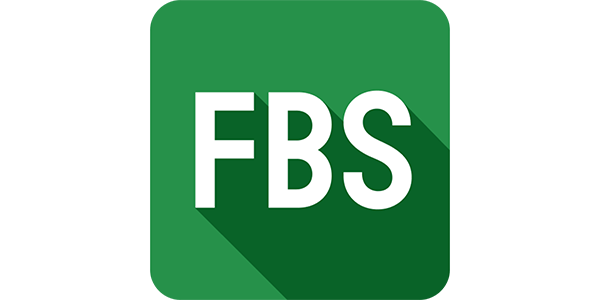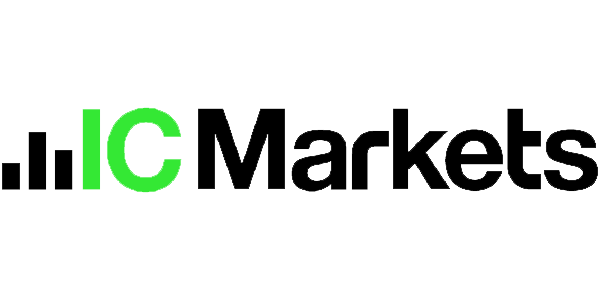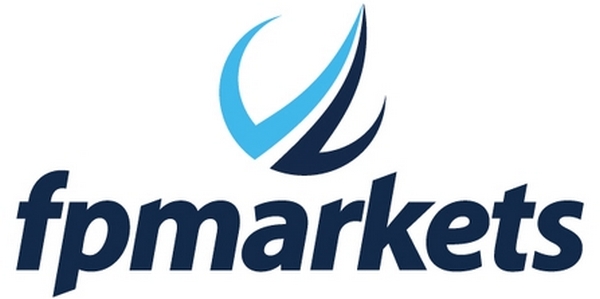However, the landscape is complicated by regulatory constraints (many brokers are offshore), currency considerations (PKR conversions), and infrastructure differences (connectivity, banking). In this review, we examine what makes a good trading platform for Pakistani traders, compare several top contenders, analyze their pros and cons, and provide guidance on how to pick the one that best fits your needs in 2025.
List of The Best Platform for Trading
Here’s a quick comparison of the best trading platform based on their compatibility and market access.
| Best For | Commision | Min Dep | Leverage | Platforms | ||
|---|---|---|---|---|---|---|
| Beginners, Professionals, Active Traders | From $6 per lot | $100 | Up to 1:500 | MetaTrader 4 MetaTrader 5 Ctrader | ||
| Beginners, Active Traders | No commission (for Standard accounts) | $5 | Up to 1:1000 | MetaTrader 4 MetaTrader 5 | ||
| Beginners, Professionals, Active Traders | From $5 per lot | $100 | Up to 1:400 | AvaTradeGo MetaTrader 4 MetaTrader 5 | ||
| Beginners, Copy Traders | No commission | $200 | Up to 1:30 (1:5 for crypto) | eToro Platform MT4 MT5 | ||
| Beginners, Active Traders, Scalpers | No commission | $1 | Up to 1:2000 | MT4 MT5 WebTrader Exness Trade App | ||
| Beginners, Professionals, Active Traders | No commission (for Standard accounts) | $1 | Up to 1:3000 | MetaTrader 4 MetaTrader 5 | ||
| Beginners, Active Traders, Scalpers | From $5 per lot | $100 | Up to 1:50 | MetaTrader 4 FOREX.com Web Trader | ||
| Beginners, Active Traders, Scalpers | From $4 per lot | $100 | Up to 1:500 | MetaTrader 4 MetaTrader 5 cTrader FxProEdge | ||
| Beginners, Active Traders, Scalpers | No commission | $200 | Up to 1:1000 | MetaTrader 4 MetaTrader 5 WebTrader | ||
| Beginners, Professionals, Active Traders | From $6 per lot | $5 | Up to 1:1000 | MetaTrader 4 MetaTrader 5 Web Terminal Multi Terminal | ||
| Professionals, Active Traders, Scalpers | From $3 per lot | $200 | Up to 1:500 | MetaTrader 4 MetaTrader 5 cTrader | ||
| Beginners, Active Traders | No commission | $0 | Up to 1:200 | MetaTrader 4 ProRealTime WebTrader | ||
| Beginners, Active Traders, Proffesionals | No commission | $1 | Up to 1:1000 | MetaTrader 4 MetaTrader 5 | ||
| Beginners, Professionals | No commission on standard accounts | $10 | Up to 1:1000 | IQ Option Platform Mobile App | ||
| Active Traders, Beginners | No commission | $1 | Up to 1:50 | MetaTrader 4 OANDA Platform | ||
| Beginners, Active Traders, Scalpers | No commission on standard accounts | $25 | Up to 1:1000 | MetaTrader 4 MetaTrader 5 OctaTrader | ||
| Beginners, Active Traders, Scalpers | No commission | $200 | Up to 1:500 | MetaTrader 4 MetaTrader 5 cTrader | ||
| Active Traders, Scalpers | No commission | $10 | Up to 1:2000 | MT4 MT5 R StocksTrader | ||
| Inexperienced and Active Traders, Scalpers | From $2 per lot | $100 | Up to 1:500 | MetaTrader 4 MetaTrader 5 | ||
| Beginners, Proffesionals | No commission | $5 | Up to 1:1000 | MetaTrader 4 MetaTrader 5 |
Pakistan Market Overview
Economic Context & Growth
- Pakistan’s economy is navigating a challenging but cautiously optimistic phase. The Asian Development Bank forecasts 2.5% GDP growth for FY 25–26, reflecting stabilization efforts and macro reforms.
- In the fiscal year 2024–25, the country has been coping with inflation, fiscal pressure, and balance-of-payments constraints.
- To regain stability, the government has launched URAAN Pakistan, a five-year blueprint aligning with the Prime Minister’s Economic Transformation Agenda.
- Export and remittance growth are key pillars. Remittances have been a significant inflow, while exports continue to be pushed via trade deals and incentives.
Strengths & Pressures
- Strengths: Large domestic market, strong diaspora remittances, strategic regional position, natural and human resources.
- Pressures: High debt, inflation, energy subsidies, import dependency, structural inefficiencies.
Foreign Exchange & Currency Dynamics
- The Pakistani Rupee (PKR) faces volatility. Exchange rates (open market, interbank) shift in response to monetary policy, trade balance, and investor sentiment.
- The open market forex (black / parallel market) is often more volatile than official (interbank) rates, reflecting supply–demand imbalances, capital controls, and limited forex liquidity.
- Key drivers: trade deficits, foreign debt servicing, foreign investment flows, central bank policy, inflation differential with U.S. and other trading partners.
Capital Markets & Financial Infrastructure
- Pakistan Stock Exchange (PSX / KSE / KSE-100 Index) is the principal domestic equity market. It’s sensitive to politics, macro developments, and global capital flows.
- The stock market has seen sharp swings due to geopolitical risk (e.g., tensions with India) and macro stress.
- Reforms are ongoing to modernize trading infrastructure, improve transparency, and attract foreign portfolio investors.
- Derivative / futures / options markets are less developed compared to equity and forex segments, but infrastructure investments are underway.
- Banking & payments: The banking system plays a central role in forex intermediation, remittance channels, and facilitating cross-border trade.
Monetary Policy, Inflation & Rates
- Inflation in Pakistan has been a persistent concern, eroding purchasing power and affecting stability.
- In early 2025, the State Bank of Pakistan (SBP) cut its key policy rate by 100 basis points to 12% to spur activity, reflecting confidence that inflation is under some control.
- Earlier, rates had been very high (around 22%), reflecting tightening cycles.
- A delicate balance: stimulate growth while keeping inflation in check.
External Sector, Debt & Balance of Payments
- Pakistan carries significant external debt obligations and vulnerability to global interest rates and capital flow reversals.
- Its trade deficits (imports exceed exports) are a structural drag.
- Remittances help cushion external pressure, but sustainable growth requires stronger export performance and foreign investment.
- Foreign Direct Investment (FDI) has increased but is still relatively modest.
- The IMF program and related conditionality continue to shape macro policy and investor confidence.
Trends, Risks & Opportunities
Trends / Opportunities
- Economic reforms gaining traction (URAAN plan, budget discipline)
- Export diversification (textiles, agri, value addition)
- Diaspora and remittance-based capital flows
- Technology / fintech acceleration
- Integration with regional trade corridors (CPEC, Gulf trade)
Risks / Headwinds
- Geopolitical tensions, especially with India, create market shocks
- Fiscal pressures & subsidies (energy, social)
- Structural problems: weak governance, power deficits, infrastructure gaps
- Inflation / currency devaluation
- Capital flight / investor risk aversion
Implications for Forex & Trading Markets in Pakistan
- Volatile currency behavior offers opportunities and risks for forex traders.
- Local currency (PKR) pairs may not always be standardized in global platforms; many traders operate in USD or cross pairs.
- Traders should monitor SBP policy, trade balance, external debt flows, and global risk sentiment as leading indicators.
- End-of-day, local capital markets and macro policy shifts often influence momentum and sentiment in trading.
- Because domestic regulation of leveraged forex/CFD is limited, many traders rely on global brokers; this increases the need for careful broker selection, trust, and risk management.
Key Criteria for Pakistani Traders
Before we dive into platform comparisons, here are the most important criteria Pakistan-based traders should evaluate:
- Regulation & Safety of Funds
- Many brokers serving Pakistan are offshore regulated (FCA, ASIC, CySEC, etc.). As of now, no major retail forex brokers are regulated domestically by SECP for CFD/forex.
- Look for segregated accounts (client funds held separately from broker’s operating funds) and negative balance protection.
- Accepts Pakistani Residents & Local Banking Integration
- The broker must explicitly accept Pakistani clients.
- Support for PKR deposits/withdrawals or local bank transfer integration reduces conversion costs and friction.
- Platform Stability & Execution Quality
- Fast, reliable order execution with minimal slippage.
- Infrastructure robustness (servers, uptime, latency).
- Multi-device compatibility (desktop, web, mobile).
- Cost Structure: Spreads, Commissions & Fees
- Transparent spread/commission models; avoid hidden markups.
- Low or no deposit/withdrawal fees (especially for PKR).
- Swap/overnight costs or zero-swap (Islamic) account availability.
- Instrument Diversity & Market Access
- Access to forex, commodities, indices, stocks, cryptocurrencies (if allowed), etc.
- More choice gives flexibility for diversification.
- User Experience, Tools & Automation
- Strong charting, technical indicators, drawing tools, alerts.
- Support for EAs / algorithmic strategies, APIs, backtesting.
- Copy trading or social trading features can be beneficial to beginners.
- Customer Support & Localization
- Support in English and (ideally) Urdu or local languages.
- Responsiveness during Pakistan business hours.
- Local banking or payment support and assistance.
- Reputation & Track Record
- Online reviews, history of withdrawals, user feedback.
- No major complaints of non-payment or suspicious behavior.
- Longevity and transparency in operations.
The Regulatory & Legal Context in Pakistan
Understanding the legal backdrop is essential:
- Forex trading legality: Retail forex trading (especially leveraged forex/CFDs) is not regulated by SECP in a fully local capacity for many brokers. Pakistani traders often rely on international brokers that accept them.
- SECP & SBP roles: The Securities and Exchange Commission of Pakistan (SECP) regulates corporate, securities, and derivatives markets domestically. The State Bank of Pakistan (SBP) regulates currency exchange and banking.
Past scams & vigilance: Pakistan has had notable forex scam cases in history (e.g. Khanani & Kalia, Zarco) involving unlicensed currency exchanges. That underscores the importance of using well-regulated platforms and verifying legitimacy. - Commodity futures locally: Pakistan has a regulated commodity futures market via the Pakistan Mercantile Exchange (PMEX). But for forex/CFDs, most platforms are international.
In-Depth Breakdown of Selected Trading Platforms
Below is a closer look at how some of the top platforms perform in terms of usability, cost, reliability, and fit for Pakistani traders.
XM
XM
- Strengths: Low minimum deposit (USD 5), multiple licenses, local bank support in Pakistan in many cases.
- Weaknesses: Some account features might be disabled depending on your region; occasional delays in withdrawal via local banking.
- Best for: Beginners and intermediate traders who want a safe, flexible entry point with a trusted brand.
FP Markets
FP Markets
- Strengths: Wide asset selection, good execution, solid reputation.
- Weaknesses: The minimum deposit (for better accounts) might be steep for small traders; PKR pathways must be confirmed.
- Best for: Traders who want more markets than just forex (commodities, stocks, indices).
Pepperstone
Pepperstone
- Strengths: Recognized edge in execution speed and low spreads.
- Weaknesses: Local funding in PKR may not always be seamless; overseas regulation rules might impose leverage limits.
- Best for: Fast traders or scalpers who prioritize tight pricing.
IC Markets
IC Markets
- Strengths: Strong infrastructure, good liquidity, good reputation among serious traders.
- Weaknesses: Higher minimums; not always best for ultra small accounts.
- Best for: More experienced or professional traders in Pakistan.
Exness
Exness
- Strengths: Often praised for flexibility, favorable conditions, and user-friendly environments.
- Weaknesses: Differences by region/jurisdiction; withdrawal processing may vary.
- Best for: Traders scaling gradually, or those experimenting with different asset types.
Top Trading Platforms / Brokers for Pakistani Traders in 2025
Based on reviews, market presence, acceptance of Pakistani clients, and feature sets, here are several platforms often cited as leading choices in 2025:
Strengths & Weaknesses of Trading Platforms in Pakistan
Understanding both sides helps you make an informed choice.
Strengths
- Access to Global Markets – Pakistani traders can access forex, global equities, indices, commodities beyond local markets.
- Low Entry Barriers – Many brokers allow small deposits, letting novices start without massive capital.
- Choice & Competition – The global broker ecosystem is competitive: better pricing, technology, platforms, promotions.
- Technological Tools – MetaTrader, mobile apps, algorithmic trading, analytics, copy trading — all are widely available.
- Islamic / Swap-Free Options – Many brokers provide swap-free accounts for Sharia compliance.
Weaknesses & Challenges
- Lack of Local Regulation – No strong domestic regulatory oversight for many forex brokers in Pakistan, which raises counterparty risk.
- Currency Conversion & Banking Friction – If PKR funding is not available, converting to USD/EUR and back can incur costs and delays.
- Withdrawal Issues & Delays – Especially for local banking, funds transfers may take longer or be rejected if compliance is insufficient.
- Potential Scams / Unregulated Operators – The past history of forex scams in Pakistan underscores the need for care.
- Infrastructure / Connectivity Issues – In certain regions, internet instability or latency can worsen trading execution.
- High Leverage Risks – Misuse of high leverage can lead to large losses quickly.
How to Choose the Best Platform for Pakistan Traders
Choosing the right trading platform in Pakistan is not just about spreads or flashy apps — it’s about security, local accessibility, and long-term reliability. Here’s a step-by-step guide:
1. Confirm Broker Legitimacy & Regulation
- Only trade with brokers licensed by tier-1 regulators (FCA, ASIC, CySEC).
- Since Pakistan’s SECP does not license most retail forex/CFD platforms, international oversight is critical.
- Check for segregated client accounts and negative balance protection.
2. Verify Pakistan Acceptance & Local Banking
- Not every broker accepts Pakistani residents — confirm on the broker’s website or with support.
- Prefer brokers that offer PKR deposits/withdrawals via local banks, reducing currency conversion costs.
- Test deposits and withdrawals with a small amount before scaling up.
3. Compare Trading Costs
- Examine spreads, commissions, and overnight swap fees.
- Be cautious of brokers that advertise “zero commission” but widen spreads significantly.
- If you need a swap-free / Islamic account, check the conditions clearly.
4. Evaluate Platforms & Tools
- Most international brokers offer MetaTrader 4 (MT4) and MetaTrader 5 (MT5).
- Check for mobile apps (Android/iOS), web terminals, and desktop versions.
- Advanced traders may want API access, algorithmic trading, or copy trading networks.
5. Check Instrument Availability
- Look for a range of products: forex, commodities (gold, oil), indices, stocks, and crypto CFDs (if allowed).
- Wider access means more options to diversify.
6. Customer Support & Localization
- Brokers with 24/5 or 24/7 live chat are preferable.
- Response in English is standard; Urdu support is a bonus for Pakistani clients.
- Check availability during Pakistan business hours.
7. Test Execution & Stability
- Use a demo account first — check order speed, slippage, and uptime.
- Execution speed matters more during volatile sessions (news events, PKR moves).
8. Consider Minimum Deposit & Account Flexibility
- Many brokers allow starting from as low as $5–$10 (PKR equivalent), but serious accounts may require $200+.
- Choose account types (Standard, ECN, Raw Spread) based on your strategy and budget.
9. Security & Transparency
- Ensure the platform uses SSL encryption, two-factor authentication (2FA), and secure payment processors.
- Avoid brokers that are not transparent about regulation, spreads, or withdrawal policies.
Popular Trading Instruments for Pakistani Traders
Pakistani traders participate in both local and global markets. The most commonly traded instruments reflect a mix of global accessibility, commodity exposure, and speculative opportunities.
| Instrument | Why Popular in Pakistan | Notes |
|---|---|---|
| Forex Majors | High liquidity, low spreads | PKR pairs limited, most accounts in USD/EUR |
| Gold | Cultural demand + safe haven | Accessible via CFDs and PMEX |
| Crude Oil | Energy import dependence | Volatile, influenced by OPEC policy |
| Global Indices | Exposure to world markets | Useful for diversification |
| Local Stocks (PSX) | Access to Pakistani economy | Requires SECP-licensed brokers |
| Global Stocks | Apple, Tesla, Amazon | Access via CFDs on global brokers |
| Cryptocurrencies | High youth adoption | Regulatory ambiguity in Pakistan |
| ETFs | Diversification at low cost | Still niche in Pakistan |
Forex / Currency Pairs
- Major Pairs: EUR/USD, GBP/USD, USD/JPY — popular for liquidity and tight spreads.
- Cross Pairs: EUR/GBP, AUD/JPY — used for diversification.
- PKR-Linked Pairs: Some brokers offer USD/PKR or PKR crosses, but they are less liquid and often restricted. Most Pakistani traders operate accounts in USD or EUR instead.
Commodities
- Gold (XAU/USD): Extremely popular due to cultural significance and safe-haven status.
- Silver (XAG/USD): A cost-effective alternative to gold.
- Crude Oil (Brent, WTI): Pakistan is a major energy importer, so oil trading is closely watched.
- Agricultural Commodities: Wheat, sugar, cotton contracts are sometimes available via CFDs or local exchanges (e.g., PMEX).
Stock Indices
- Global Indices: S&P 500, NASDAQ, FTSE 100, DAX, Nikkei 225. These allow exposure to broader global economies.
- Regional Indices: Fewer are available on retail platforms, but global brokers often include emerging market indices.
Equities / Stocks
- Local Shares: Pakistan Stock Exchange (PSX) lists companies like Oil & Gas Development Company, Habib Bank, and Fauji Fertilizer.
- International Equities: Via CFDs, traders can access giants like Apple, Tesla, Amazon, and other global blue chips.
Cryptocurrencies
- Bitcoin (BTC), Ethereum (ETH), Ripple (XRP), Litecoin (LTC) are popular among Pakistani youth.
- Usually accessed through CFDs on global brokers or via crypto exchanges.
- Note: Regulations in Pakistan on crypto remain ambiguous; traders must proceed cautiously.
Futures & Options (Derivatives)
- Locally, the Pakistan Mercantile Exchange (PMEX) offers futures contracts in commodities, gold, and crude oil.
- International brokers provide CFDs on futures, allowing exposure to volatility without direct ownership.
Exchange-Traded Funds (ETFs)
- ETFs are still relatively underused in Pakistan but are gaining interest.
- Global brokers provide exposure to ETFs tracking technology, energy, and emerging markets.
Conclusion
The trading landscape in Pakistan is expanding, with more individuals seeking access to global markets for forex, commodities, indices, and equities. While Pakistan does not yet have a robust domestic regulatory framework for online forex/CFD trading, international brokers have filled this gap, offering Pakistani traders a wide choice of platforms. For Pakistani traders, the best platform is the one that ensures security, reliable withdrawals, transparent fees, and access to instruments that align with personal trading strategies. Testing through demo accounts, small deposits, and local banking channels is essential before committing larger funds.
FAQ
Is online trading legal in Pakistan?
Yes. Online trading is legal, but forex and CFD trading are not directly regulated by SECP for retail brokers. Traders usually use internationally regulated brokers that accept Pakistani residents.





















